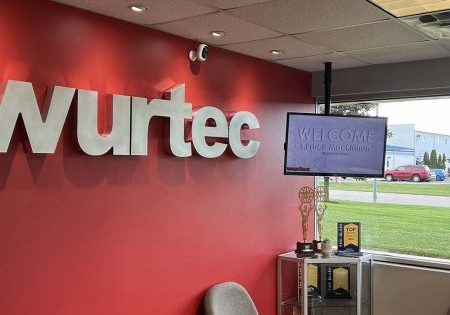A New Way To See the Job
Nov 1, 2022

Recently, I received a press release titled, “Delivering a Large Construction Project with a Digital Twin.” At first, I thought they were talking about a 3D model (commonly used by designers to “sell” the idea of a building to investors). But no, it was much better than that. The job was in Norway, a new 50,000-m2 hospital to be finished in 2023. By using an open cloud-based planning and data management solution from the Nemetschek Group, the teams were able to implement a completely digital working method to maximize collaboration and efficiency (and with significant cost savings). The digital twin is always up-to-date with all current documentation. It was not only used through the design and construction phases, but it also will be used throughout the entire building lifecycle. It is almost a living thing, changing daily and staying with its twin forever. They call it Building Lifecycle Intelligence (BLI). This is the wave of the future for those of us who contribute a very important part of buildings.
As we think about new ways to see the jobs and jobsites, our focus this month is, appropriately, on Elevator Software. We have only three articles, but they are excellent:
- Robots and Remote Elevator Operability by Kaija Wilkinson. Through special software, robots will be able to call elevators and transit floors using TK Elevator’s (TKE) advanced system at Canada’s New Calgary Cancer Centre.
- The Elevator Industry: Data Accessibility and Transparency by Jonathan Taub. The author states that the FIELDBOSS software promotes transparency to all users with technology that eliminates the human element.
- Lift Industry and BIM: A Long Overdue Adopted and Typically Overlooked Project Enabler by Miguel Castro. The author touts the use of Building Information Modeling (BIM), which is becoming more important with the rise of digital twins.
This month, we also publish the Global Elevator Industry Pulse by Wilkinson. This is the eighth industry survey conducted by VFA, Elevator World, AFAG and Credit Suisse. It shows a slight trend downward except for in Europe. Material shortages and inflation persist, while employment opportunities have edged up.
The features in this issue are worldwide, ranging from New York to London to Malmö, Sweden:
- The Mayfair Townhouse by Mark Stephen Jones. One of London’s most iconic luxury hotels chose Hitachi’s machine-room-less elevators for their modernization in a large, recently completed construction job that started in 2018.
- Hitting the Target. Nouveau Elevator was tasked to install escalators in a Target store in New York City where there was minimal space and little upper-level support strength. How they solved this issue is very interesting!
- An Icon of Modern Architecture. The Turning Torso, a building in Malmö, Sweden, was the world’s first twisting tower and is listed by the Council on Tall Buildings and Urban Habitat as one of the 50 Most Influential Buildings of the Last 50 Years. TKE was chosen to modernize the elevators without disturbing the tenants.
We continue with a fascinating series this month with part 3 of Rise: The Untapped Potential of Women in the Elevator Industry by Åsa Christina Magnusson. In this third of four parts, the author interviews four women in management positions, including Karen Kennedy Dodds, Kathleen Walsh, CeCe Matot and your author. I was taught to never be part of the story; however, I was honored to be in such esteemed company.
Hope you enjoy this issue.
Get more of Elevator World. Sign up for our free e-newsletter.








